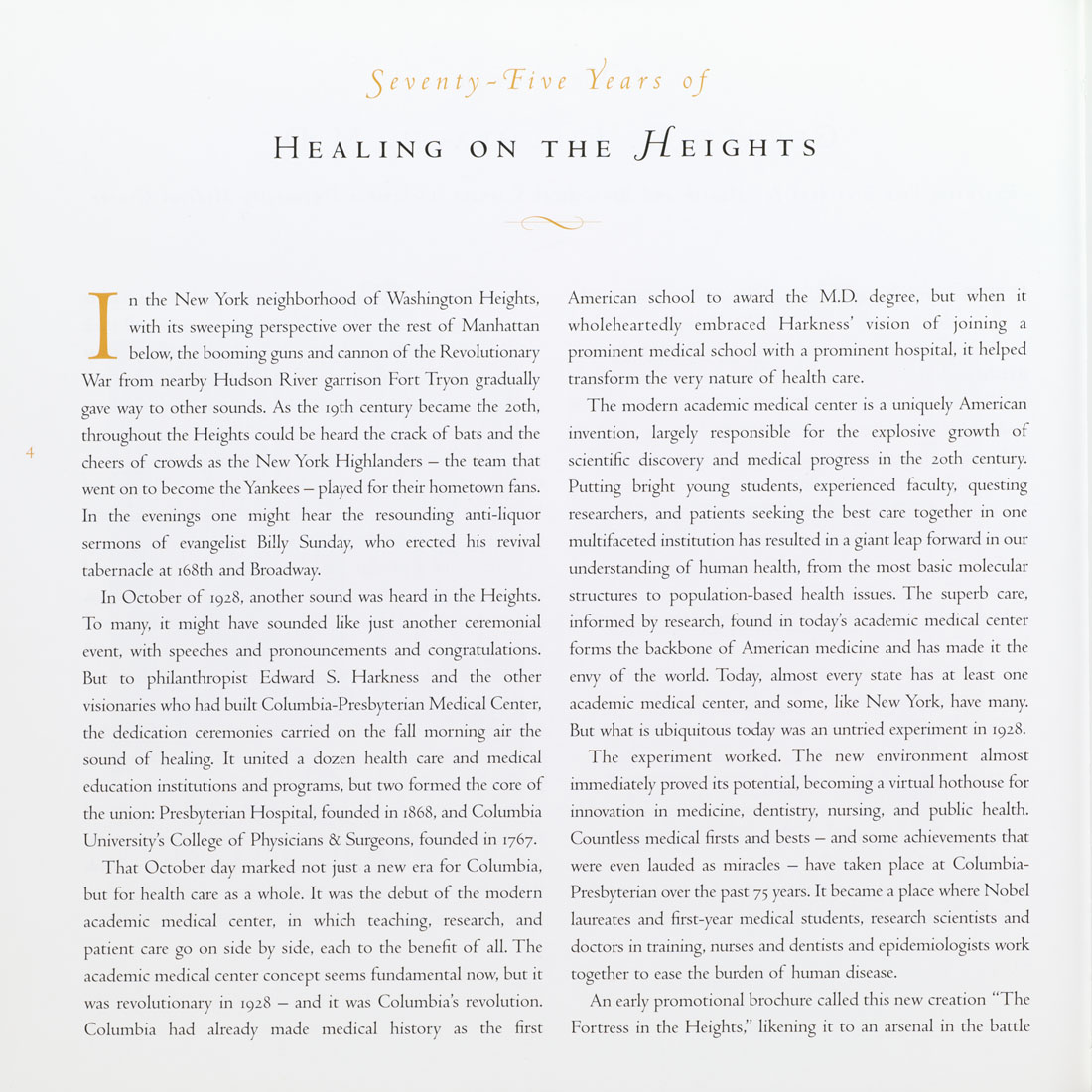^ ev en ty -T^iv e Years of
Healing on the //eights
In the New York neighborhood of Washington Heights,
with its sweeping perspective over the rest of Manhattan
below, the booming guns and cannon of the Revolutionary
War from nearby Hudson River garrison Fort Tryon gradually
gave way to other sounds. As the 19th century became the 20th,
throughout the Heights could be heard the crack of bats and the
cheers of crowds as the New York Highlanders - the team that
went on to become the Yankees — played for their hometown fans.
In the evenings one might hear the resounding anti-liquor
sermons of evangelist Billy Sunday, who erected his revival
tabernacle at i68th and Broadway.
In October of 1928, another sound was heard in the Heights.
To many, it might have sounded like just another ceremonial
event, with speeches and pronouncements and congratulations.
But to philanthropist Edward S. Harkness and the other
visionaries who had built Columbia-Presbyterian Medical Center,
the dedication ceremonies carried on the fall morning air the
sound of healing. It united a dozen health care and medical
education institutions and programs, but two formed the core of
the union; Presbyterian Hospital, founded in 1868, and Columbia
University's College of Physicians & Surgeons, founded in 1767.
That October day marked not just a new era for Columbia,
but for health care as a whole. It was the debut of the modern
academic medical center, in which teaching, research, and
patient care go on side by side, each to the benefit of all. The
academic medical center concept seems fundamental now, but it
was revolutionary in 1928 — and it was Columbia's revolution.
Columbia had already made medical history as the first
American school to award the M.D. degree, but when it
wholeheartedly embraced Harkness' vision of joining a
prominent medical school with a prominent hospital, it helped
transform the very nature of health care.
The modern academic medical center is a uniquely American
invention, largely responsible for the explosive growth of
scientific discovery and medical progress in the 20th century.
Putting bright young students, experienced faculty, questing
researchers, and patients seeking the best care together in one
multifaceted institution has resulted in a giant leap forward in our
understanding of human health, from the most basic molecular
structures to population-based health issues. The superb care,
informed by research, found in today's academic medical center
forms the backbone of American medicine and has m.ade it the
envy of the world. Today, almost everj' state has at least one
academic medical center, and some, like New York, have many.
But what is ubiquitous today was an untried experiment in 1928.
The experiment worked. The new environment almost
immediately proved its potential, becoming a virtual hothouse for
innovation in medicine, dentistry, nursing, and public health.
Countless medical firsts and bests — and some achievements that
were even lauded as miracles — have taken place at Columbia-
Presbyterian over the past 75 years. It became a place where Nobel
Laureates and first-year medical students, research scientists and
doctors in training, nurses and dentists and epidemiologists work
together to ease the burden of human disease.
An early promotional brochure called this new creation "The
Fortress in the Heights," likening it to an arsenal in the battle
|








